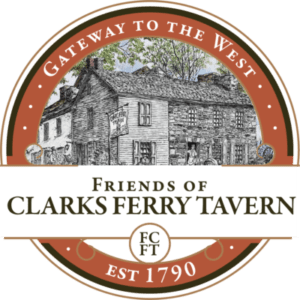The History of Newport, Pennsylvania
by Glenn N. Holliman
This Newport community, celebrating our 175th anniversary as a borough, was for millions of years primeval forest, divided from the Tuscarora Mountain chain by the river we call the Juniata.
Prior to the arrival of European settlement in the 170os, Native Americans for thousands of years made their homes along our river banks, engaged in simple gardening for corn and beans, hunted the deep woodlands for game and fished the waters for additional substance.
It was upon these Indian trails through the forests and canoes on the broad waters of the Susquehanna and the Juniata that second and third generation Europeans, later called Americans, first tread in what we know as Perry County. The Indian Treaty of the 1754 deeded the land to the descendants of William Penn. It was in the winter of 1775, still in the reign of King George the Third, that one David English patented hundreds of acres between two tributaries – the Little Buffalo and the Buffalo, major waterways which drain much of the interior of Perry County. Along these waters, English built the first mill, and settlers began to gather between the two fast flowing streams.
In 1789, after the American Revolution, Paul Reider (pronounced Rider) purchased the property from English. It was Reider’s sons who in 1804 first plotted lots on this broad bend in the Juniata, where homes and businesses could be constructed. Flatboats and arks (one way flatboats) pushed off from what is still called Dock Street where the Little Buffalo meets the Juniata, carrying early commerce downstream to Harrisburg and other points. As the years passed, the landing acquired the name Newport, even before the Canal which arrived in 1829 or the borough established in 1840.
The construction of the Juniata Division of the Pennsylvania Canal greatly accelerated growth in Newport and Perry County. The products of farming and forestry began to arrive from the interior of the region seeking an outlet to more populous markets. For the first time goods could travel as easily upstream as well as downstream. New lots were surveyed in Newport, and the population increased to approximately to 400 by the time the borough was legally created.
The next acceleration of growth was the construction of the Pennsylvania Railroad which reached Newport by 1849. The main line of America’s greatest railroad traveled right thorough the center of Newport, down 3rd Street, and its depot sat for 55 years at what is now the Weis parking lot. Remains of the track can still be seen between the supermarket and the post office.
After the Civil War, given our location on a transportation artery, Newport boomed. Look around you (assuming one is standing at the Newport square). These three story tall buildings on each corner were built between 1871-1876. The Marshall Iron furnace was belching red smoke in East Newport; the tanneries produced some of the finest leather in American.
A planning mill furnished the window frames, sashes and porches for many of Harrisburg’s finest homes. Brick yards churned out materials that cover our homes to this day. Later a tannic acid plant located in what is now the trailer park, and the Newport and Sherman’s Valley Railroad paralleled the tracks of the Pennsylvania Railroad. A stone yard, a green house and other manufacturing followed.
Along the way, we taxed ourselves to create a public water system in the 1890s, and a sanitation system in the 1950s. We built public schools. We established a library a century ago. We constructed magnificent buildings for our religious congregations. A Veterans Park honors our service men and women, and provides recreation for our children and youth. Fire and ambulance authorities provide the finest in protection and care.
Today over 350 homes and businesses in Newport are on the National Register of Historic Places, an assembly of 19th Century American architecture, preserved in one community, largely untouched by the urban renewal and economic expansion of the 20th Century.
However, the advance of 20th century technology and the centralization of manufacturing and industry changed our community. World Wars and the Great Depression also had an effect. Our major industries closed or moved elsewhere. Our economy suffered. Too many of our young people began moving away, seeking employment in our growing suburbs of America.
To a degree, once again being a transportation artery came to our rescue. Thanks be to the William Penn Highway in the late 1910s and the construction of 322/22 in 1965, now a half century old super highway, the majority of our citizens commute by automobile to work outside of Perry County. Many of us are able to have productive employment in larger cities, and yet enjoy small town and rural life in Newport and Perry County.
